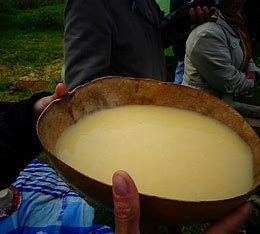The evolution of fermentation techniques throughout history is a captivating topic that sheds light on the rich culture and history of human civilization.

Fermented foods and drinks have been an essential part of human society for thousands of years and have evolved into the diverse range of products we enjoy today.
From the accidental discovery of mead in China to the complex fermentation techniques used in Asia, Africa, and the Americas, the history of fermentation is a story of creativity, innovation, and adaptation.
In this blog post, we will explore the evolution of fermentation techniques throughout history and understand how fermented foods and drinks have influenced human culture and nutrition.

The Earliest Known Evidence of Fermentation
The earliest evidence of fermentation dates back to around 7000 BCE, when residues of a fermented beverage made from rice, honey, and fruit were discovered in northern China.
This beverage, known as mead, was likely made by chance, as wild yeasts present in the environment would have initiated the fermentation process. The discovery of mead is significant, as it provides evidence of the existence of early fermented beverages, which eventually became a staple in many cultures.
In the Middle East and Mediterranean
Around 5000 BCE, the people in the Middle East and Mediterranean began making beer and wine using fermented grains and grapes.
Ancient Egyptians, for example, were known to brew beer using barley, while the Greeks and Romans preferred wine.
The brewing process during this time was relatively simple, as people would mash grains or grapes, and let them ferment naturally.
However, the beer and wine produced during this time were relatively low in alcohol content compared to modern-day beers and wines.
Fermentation in Asia

Fermentation techniques in Asia are diverse and complex, with each culture having its own unique approach.
In China, for instance, soybeans have been fermented since ancient times to produce soy sauce and miso. Similarly, in Japan, fermented soybeans are used to make natto, while Korea is famous for its kimchi, which is made by fermenting vegetables with spices and salt.
In India, dairy fermentation is a crucial aspect of the cuisine, with products like yoghurt, buttermilk, and paneer being widely consumed.
The fermentation of dairy products in India dates back thousands of years and was initially used as a method of preservation in the absence of refrigeration.
Fermentation in Africa

Fermentation techniques are widespread in Africa, and traditional fermented foods and beverages are an essential part of the diet in many African countries.
In West Africa, for example, sorghum and millet are fermented to make traditional alcoholic beverages like burukutu and pito.
In Ethiopia, teff, a grain that is unique to the region, is used to make injera, a sourdough flatbread that is a staple food in the country.
Fermentation in the Americas

Fermentation techniques in the Americas were initially limited to the fermentation of maize to make chicha, a traditional alcoholic beverage.
However, with the arrival of Europeans, new fermentation techniques were introduced, leading to the production of various fermented products like cheese, sauerkraut, and vinegar.
The Industrial Revolution and Modern Fermentation Techniques
The industrial revolution brought about significant changes in the way fermentation was used in the food industry.
Innovations like pasteurisation and refrigeration allowed for the mass production and preservation of fermented foods and drinks.
New techniques like continuous fermentation, which involves feeding a steady supply of nutrients to microorganisms, revolutionised the production of beer and other alcoholic beverages.
In recent years, there has been a resurgence of interest in traditional fermentation techniques, and many artisanal food producers have returned to traditional methods of fermentation.
The use of probiotics in fermented foods has also gained popularity due to their potential health benefits.
In Conclusion:
Fermentation techniques have evolved over time, and each culture has developed its unique approach to the process.
From the accidental discovery of mead in China to the complex fermentation techniques used in Asia, Africa, and the Americas, fermented foods and drinks have played a significant role in human civilization.
The industrial revolution brought about significant changes in the food industry, but traditional fermentation methods are making a comeback in recent years due to the growing interest in natural and healthy foods.
Fermentation is not only a method of food production; it is also an essential aspect of human culture and history.
The unique flavours, textures, and aromas of fermented foods and drinks reflect the environment, traditions, and customs of each culture.
Understanding the evolution of fermentation techniques throughout history allows us to appreciate the diversity and complexity of fermented foods and drinks worldwide.
Recommendations:
- “The Art of Fermentation: An In-Depth Exploration of Essential Concepts and Processes from Around the World” by Sandor Ellix Katz
- “Wild Fermentation: The Flavor, Nutrition, and Craft of Live-Culture Foods” by Sandor Ellix Katz
- “Ferment for Good: Ancient Food for the Modern Gut: Discover the Slowest Kind of Fast Food” by Sharon Flynn
- “Fermented Foods for Vitality & Health: Boost Your Digestive and Immune Systems with Delicious Probiotic Recipes” by Dunja Gulin
- “The Noma Guide to Fermentation: Including koji, kombuchas, shoyus, misos, vinegars, garums, lacto-ferments, and black fruits and vegetables” by René Redzepi and David Zilber
